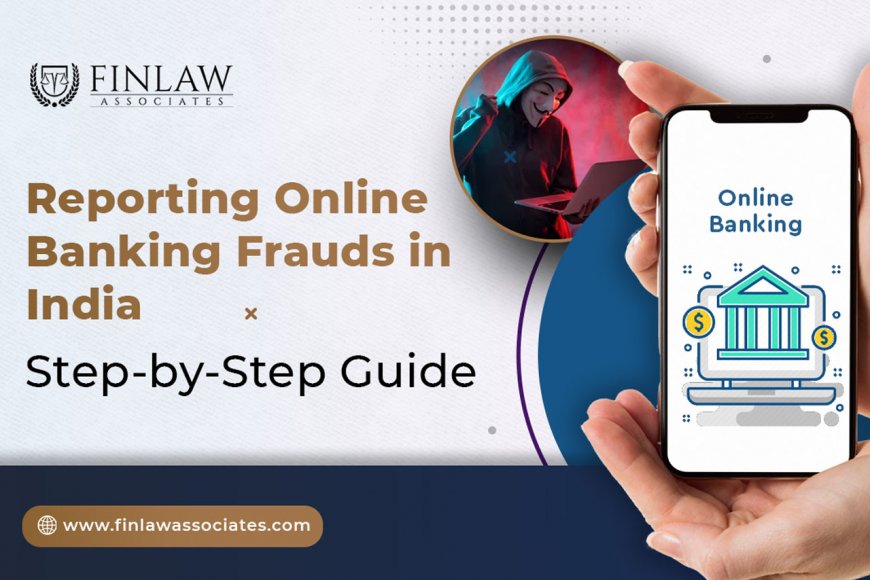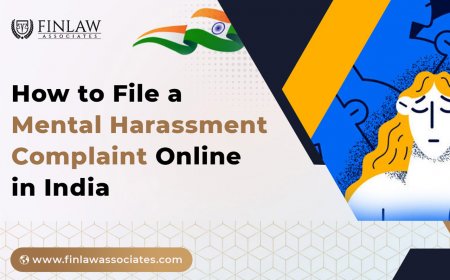Reporting Online Banking Frauds in India: A Step-by-Step Guide
Learn how to report online banking frauds in India with this step-by-step guide. Protect your money and take action quickly after a bank scam.

In today's digital-first world, online banking frauds in India have become alarmingly common. As more people embrace net banking, UPI payments, and mobile wallets, cybercriminals are finding new ways to exploit vulnerabilities. According to government reports, India faces thousands of cases of online bank frauds every day, affecting individuals and businesses alike.
If you have been a victim or want to prepare yourself against such threats, this comprehensive guide explains how to report online banking frauds in India effectively and protect yourself in the future.
What Are Online Banking Frauds?
Online banking frauds refer to criminal activities that exploit internet-based banking systems to illegally access, steal, or transfer money. In India, such frauds are growing both in number and complexity.
Common forms of online bank frauds in India include:
-
Phishing scams (fake emails/messages)
-
Vishing (fraudulent phone calls pretending to be from the bank)
-
Smishing (SMS scams)
-
Unauthorized access to bank accounts
-
Fake banking apps and clone websites
-
QR code scams
-
ATM skimming and card cloning
Understanding these threats is the first step toward prevention and quicker reporting.
How Big is the Problem of Online Bank Frauds in India?
-
According to the Reserve Bank of India (RBI), reported incidents of online banking frauds in India surged by 60% in 2023 compared to previous years.
-
Over ₹11,000 crores were lost to cyber frauds in the first half of 2024 alone (India Today).
-
The National Cyber Crime Reporting Portal receives approximately 6,000 complaints daily.
Clearly, online bank frauds in India are not isolated events—they are widespread and evolving fast.
Immediate Steps to Take After an Online Banking Fraud
If you suspect or detect a fraudulent transaction, act immediately:
1. Contact Your Bank or Payment Service Provider
-
Call your bank’s 24x7 helpline immediately.
-
Request them to freeze or block your account/cards temporarily.
-
Ask for a written acknowledgment of your complaint.
2. Inform the Cyber Crime Cell
-
File a complaint through the National Cyber Crime Reporting Portal.
-
Alternatively, call the Cyber Crime Helpline 1930 for instant assistance.
3. File an FIR at Your Local Police Station
-
Visit your nearest police station.
-
Register an FIR under sections like IT Act 2000 and IPC related to cybercrimes.
Pro Tip: Keep copies of all communication, complaint numbers, transaction IDs, screenshots, and email trails.
Step-by-Step Guide to Reporting Online Banking Frauds in India
Here’s a detailed breakdown:
|
Step |
Action |
Platform/Authority |
|
1 |
Call your bank to block your account/cards |
Bank Helpline |
|
2 |
File a complaint online |
|
|
3 |
Register an FIR |
Local Police Station |
|
4 |
Escalate unresolved complaints |
RBI Ombudsman/Sachet Portal |
|
5 |
Track your complaint status |
Cybercrime portal dashboard |
Important: Filing a complaint within 24 hours significantly increases the chances of recovering lost funds.
Key Platforms for Reporting Online Bank Frauds in India
-
National Cyber Crime Reporting Portal (cybercrime.gov.in)
-
Cyber Crime Helpline - Call 1930
-
Bank's Grievance Redressal Mechanism
-
RBI Sachet Portal (sachet.rbi.org.in) — for escalations against banks and NBFCs
-
NPCI Helpline — for UPI and payment gateway-related frauds
Customer Liability Rules by RBI
RBI mandates a clear framework for customer protection:
-
Zero Liability: If the fraud is due to negligence by the bank or third-party breaches.
-
Limited Liability: If reported within three working days, your liability is capped (₹5,000 to ₹25,000 depending on the type of account).
-
Full Liability: If the customer is negligent (e.g., sharing OTPs).
Tip: Always report suspicious activities immediately to avoid bearing losses.
Preventive Tips to Avoid Online Bank Frauds
Protect yourself by following these measures:
-
Never share OTPs, PINs, passwords with anyone—even if they claim to be bank officials.
-
Use official bank apps/websites for transactions.
-
Enable transaction alerts for all banking activities.
-
Use strong and unique passwords for banking apps and email accounts.
-
Avoid public Wi-Fi when accessing sensitive information.
-
Verify UPI QR codes before scanning or paying.
-
Regularly update your device's OS and banking apps to avoid security vulnerabilities.
Remember: "Think before you click" applies to online banking too!
FAQs about Online Banking Frauds in India
Q1. How long does it take to resolve a fraud complaint in India?
-
Generally, banks and authorities are expected to resolve issues within 90 days after complaint registration. Immediate reporting can expedite recovery.
Q2. Can I recover money lost due to online banking fraud?
-
Yes, in many cases. Prompt reporting within 24–72 hours improves chances of reversing the fraudulent transaction.
Q3. What documents are needed for filing a complaint?
-
ID proof (Aadhaar, PAN)
-
Bank statement highlighting the unauthorized transaction
-
Screenshots of fraudulent messages or emails
-
Complaint registration receipt (if already reported)
Q4. Is OTP sharing considered customer negligence?
-
Yes. Sharing OTPs or passwords with others—even unknowingly—can make you liable for the entire loss.
Q5. Can businesses also report online banking frauds?
-
Absolutely. Companies facing cyber frauds should also report through the cybercrime portal and inform their corporate banks.
Final Thoughts
The rising incidents of online banking frauds in India call for both proactive vigilance and immediate action when fraud strikes. By following the correct reporting steps and adopting cyber-safe habits, you can minimize your risk and recover losses effectively.
Stay informed. Stay alert. And remember, in the fight against online bank frauds in India, time is your biggest weapon.
What's Your Reaction?















